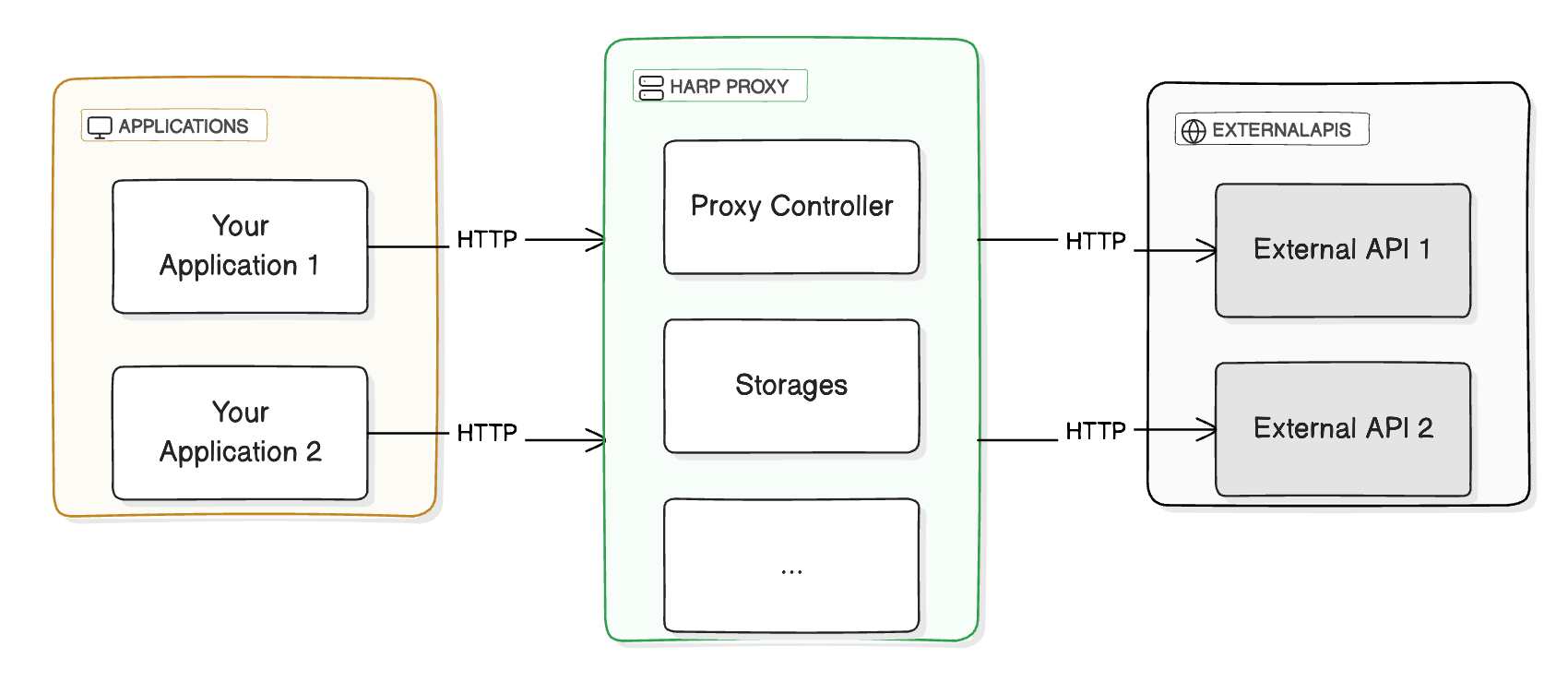Attention
This is the documentation for HARP Proxy, actually published as an early preview. Both the software and documentation are a work in progress, and although we already use it on various production servers, they may contain inaccuracies, typographical errors, huge mistakes and empty pages. We work hard to eradicate all mistakes and implement stuff, but it is a long and tedious process. We appreciate your patience and understanding. Of course, any help will be greatly appreciated.
Harp — HTTP API Runtime Proxy¶

HARP operates as a sidecar proxy that sits between your application and remote APIs, elevating their reliability, performance, and security. By doing so, it also provides observability and reduces the amount of userland code required for common non-business functionalities.
Whether you are in the development phase or ready for production, HARP serves as a versatile tool that caters to different purposes.

The core runtime of HARP primarily consists of two components: a proxy (or a set of proxies) and a dashboard. Each proxy is responsible for forwarding requests to its endpoint, while the dashboard allows you to observe the requests passing through the proxies.
HARP adopts a modular approach, where all features are implemented as independent and composable modules known as “applications.” These applications can be enabled, disabled, extended, or arranged in different configurations to suit your specific requirements. While HARP provides sensible defaults to get you up and running quickly, it also offers limitless flexibility, allowing you to customize the proxy according to your unique needs.
|
Install and run your first proxy. |
|
|
Explore the user interface. |
Configure and watch. |
|
Enhance and extend. |
Dive in the internals. |
|
Implementation details. |
|